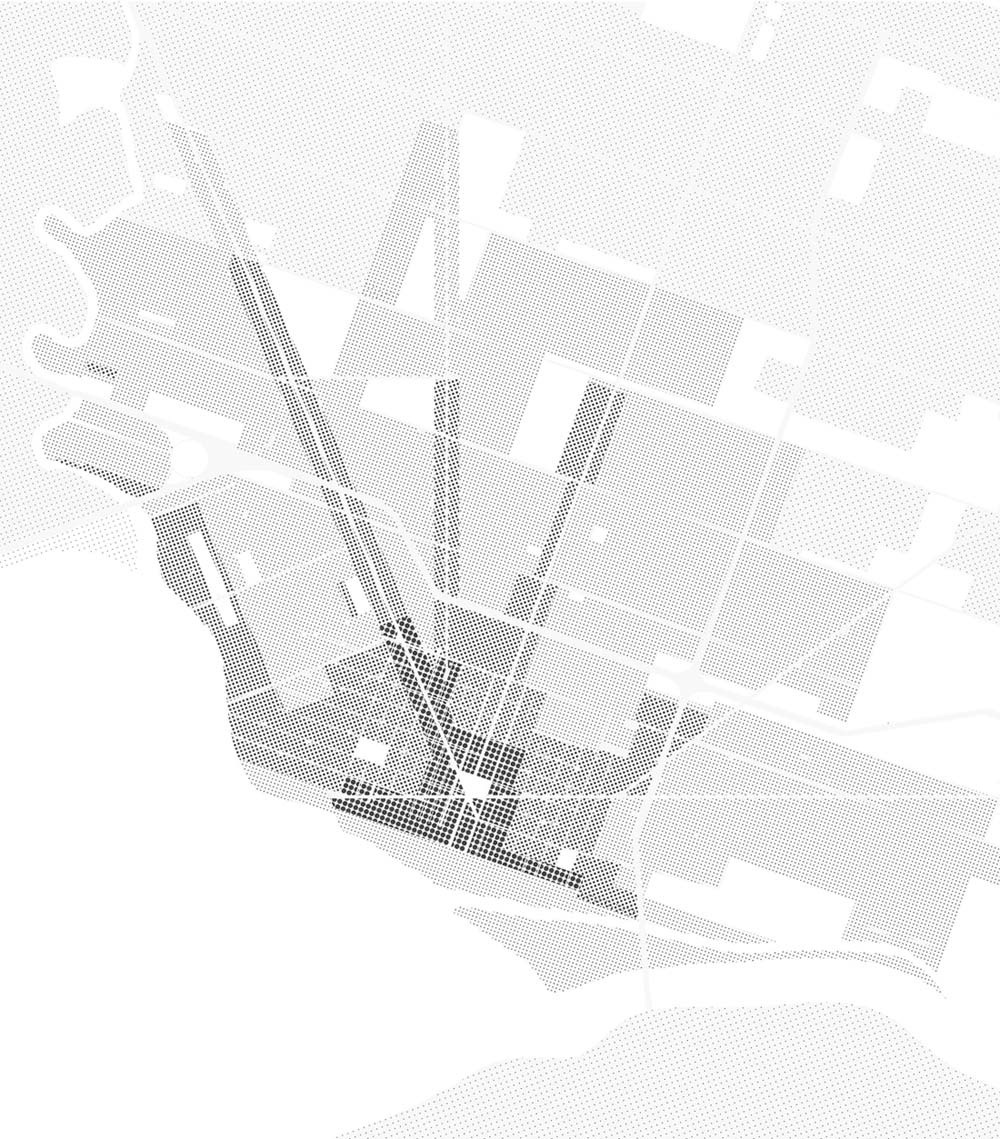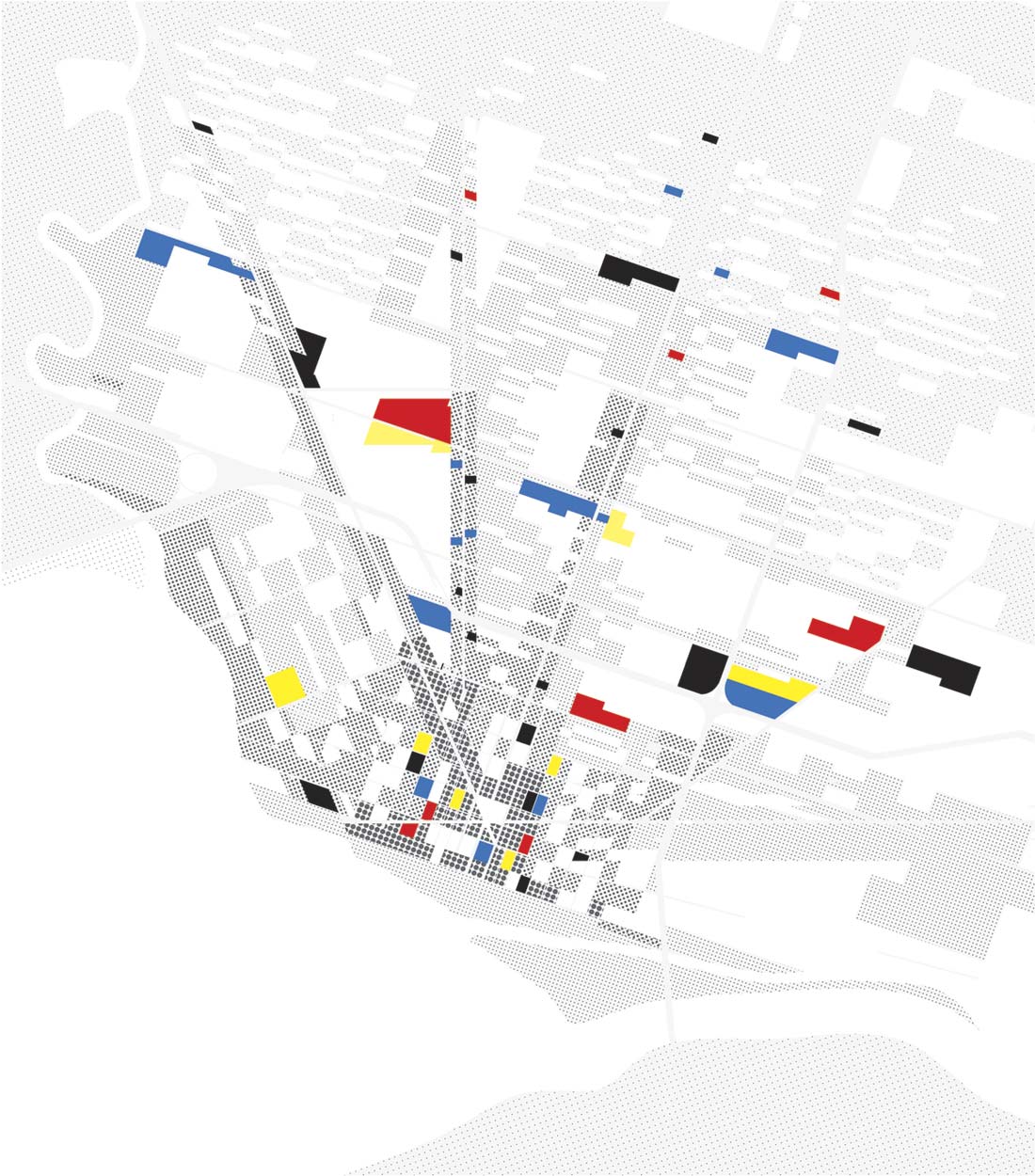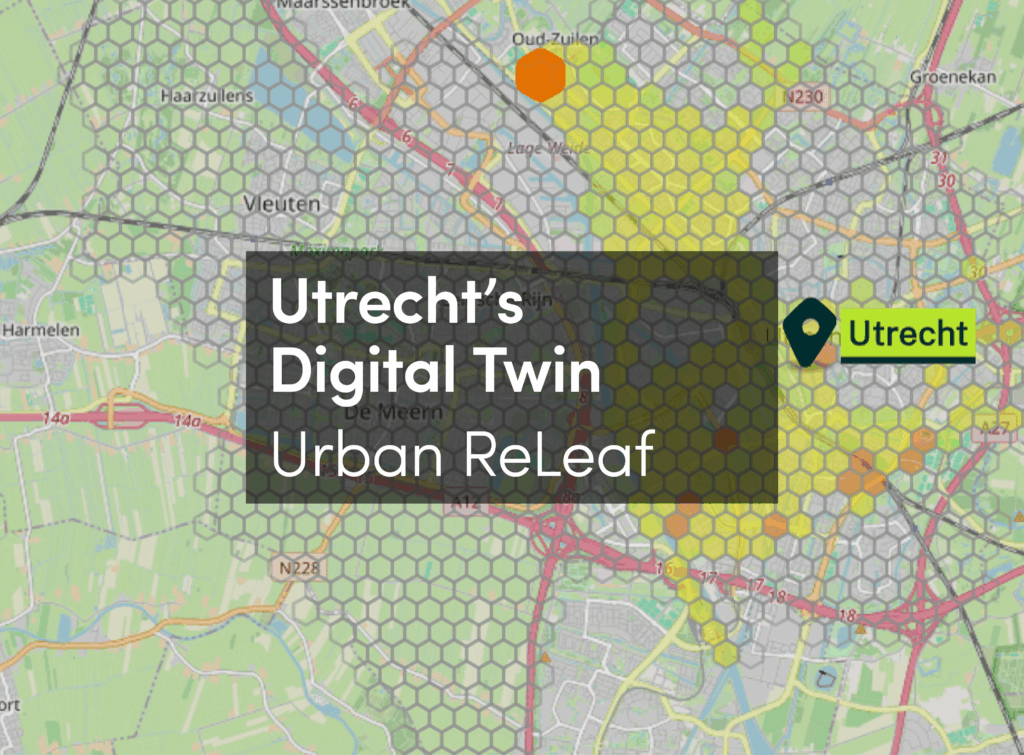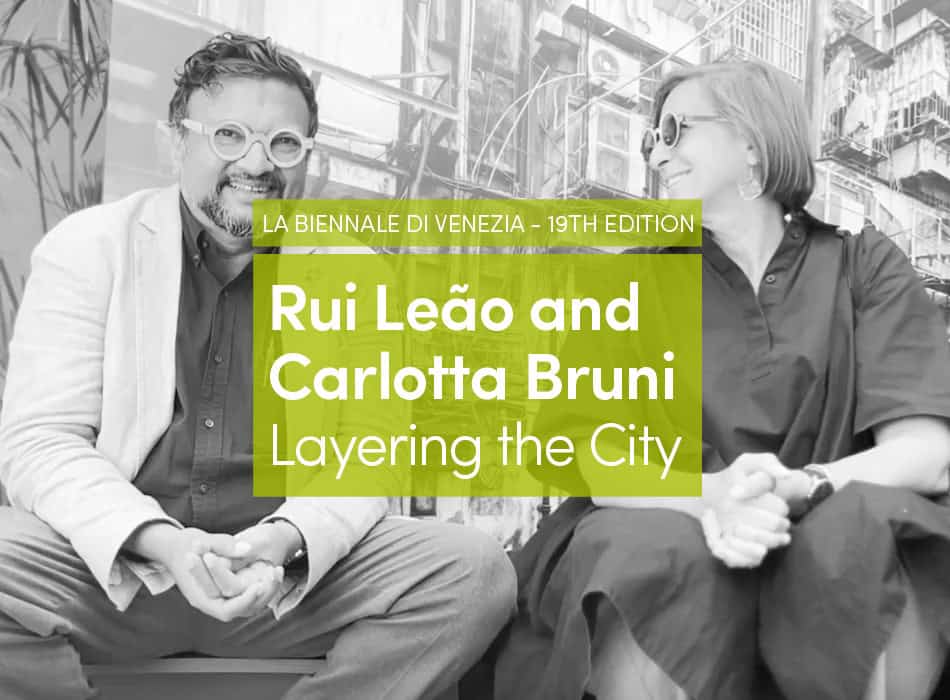Brent D. Ryan and Lorena Bello Gomez in conversation with Roi Salgueiro.
Roi Salgueiro I would like to start by talking about your paper on Detroit, “The Fiscal Topography of the Shrinking City.” In the paper, you deal with the relationship between different phases and spaces of capital accumulation, and with how the triumph of world cities is directly correlated to the abandonment and neglect of other places. Correspondingly, the expression of capital is not only the image of urban success but also one of abandonment and decay. What interests me is that you argue that it is in the latter situation where it is possible to see and imagine virtuous circles between architectural production, urban design and the creation of economic and social value.
Brent Ryan In 2012 we were approached by Perspecta to address the topic of money in relation to decline. At that moment, people’s minds were still on the crisis of the previous years, which affected certain cities and certainly Detroit. In fact, that crisis put Detroit on everyone’s screen as a representation of a relatively invisible phenomenon of decay. Our intention was to reflect upon that condition by portraying the city as a kind of topography. In a way, the idea was to speak metaphorically about the condition of the shrinking city through the lens of landscape, reimagining Detroit as a set of fiscal peaks and valleys that were manifest in the built environment. We are very used to doing this with the peaks of capitalism, in places such as London, in order to say: “Look; this is what capitalism looks like.” We wanted to see the other side of the coin.
The fiscal topography of financial global investment/disinvestment. Brent D. Ryan and Lorena Bello
Lorena Bello The idea of urban success and abandonment as two sides of the same coin follows Smith and Harvey’s capital accumulation studies. As urban designers, our contribution resides in giving an image to that inverted topography of wealth and abandonment. We do that by mirroring growth and abandonment like binary notations. To that end, peaks of wealth of global cities are confronted with atolls of abandonment of shrinking ones. In more detail at the city scale, these inversions are evident in booming skyscrapers that rise at the rhythm of the stock market, paired up with the ruined fabric and infrastructure of shrinking territories. In an era of growing environmental and ecological awareness, these urban crises are also paired up with natural phenomena – as we understand that human settlements form as much an intrinsic part of nature as a shrinking volcano.
To your second point, despite the general understanding of shrinking cities as slow places, which is true for when the processes of abandonment are over, processes of de-growth in disinvested cities are as fast as processes of growth in booming ones. In some American cities, the clearance of these abandoned city fabrics also happened at great speed. From beginning to end, design is crucial to ameliorate the living difficulties of those citizens who remain, and reduced budgets ask designers to achieve more with less. Creativity and invention are at stake. In other words, design matters in shrinking cities more than it does within the abundance of rich environments, but the challenges are also greater.
BR The point is that much of Detroit is fiscally underwater. It is accepted that you cannot make money in most of the city. Although a lot of developers want to work in the city, they need subsidies; these act like a life preserver. However, when you look at Detroit you also see that there are places where profit is actually possible. We wanted to understand and show those.
RS In the analysis of this relationship between urban regeneration and architectural operations, you end up showing a particular typological scenario with five types of urban situations that have played a significant role in Detroit’s partial regeneration.
Detroit’s Typological Archipelago: Suburban Enclave / Entertainment Nexus / DIY Island / Imagined History / Surviving History. Brent D. Ryan and Lorena Bello
There are two aspects that I find interesting in your approach to these topologies. First, you do not delineate their formal conditions. In fact, some of them are more programmatic than formal. Second, although you explicitly adopt a Learning from Las Vegas ethos, at the same time you recognize that these typologies are not in themselves particularly interesting and you claim the necessity of architectural subversion.
BR One of the things that urbanism can do is to reflect on the unconsidered effects of things that were intended with a different aim. In my previous works on declining cities, I was interested in the relation the shrinking city has with previous images of the city. In this sense, I was particularly struck by the idea of the archipelago. Our analysis dealt with the question of economics through the situation of architectural islands in a sea of green that decline has generated. Detroit is Koolhaas and Ungers’s “archipelago”, unconsciously realized. The city likes to construct islands: large self-contained structures that shut out the surrounding cityscape and keep out the perceived bad things that exist in the rest of the city. These islands conform to the typologies we studied.
One of these were “megastructures”, which started with John Portman’s building (Renaissance Center) in the 70s and were followed by huge automobile plants. Behind them are conjoined forces of both capitalism and the state. They are supported by the growth machine.
Now, the growth machine is building stadia and casinos. These are what we called the “entertainment islands”. Most of them are focused on leisure: as the city is not competitive economically, there is a shift towards tourism.
The “suburban island” is even odder. In a very damaged neighborhood, developers can come in, close off four or five blocks and build a suburban subdivision. These intend to be sweet and naive, but they are an intentional negation of history, of blackness, of urban conflict. They are a safe space. They mirror the suburbia that you see in movies.
Like in Koolhaas’s archipelago, Detroit was an arena for competing approaches to urbanism. So, in the same way that there are suburban islands, there is the opposite: a sort of recreated urbanity. This is the “new urbanist” approach. This is again a very polemic attitude. The fabric of the city is so devastated that you cannot actually rebuild it. So, people construct what they think was the historic cityscape; they develop an entirely imagined version of history. At the same time, some historic blocks are being preserved. We referred to those two possibilities as the islands of “imagined and surviving history”.
Finally, now the trend is what we termed the “Do It Yourself islands (DIY).” The DIY is where hipsters are coming, which are seen as the nexus of all things virtuous. They tend to become a nexus of economic activity. They are a sort of Jane Jacobs ideal.
LB Regarding your comment on form. We don’t say that these topologies don’t have a definite form; all of them do. What we do say is that this physical and fiscal landscape is modest and unassuming. Its aim is not to transform the landscape of abandonment, but to ameliorate its most brutal characteristics: homelessness, drug addiction, or slum living. Architecturally, they all lack invention, maybe with the exception of the DIY islands. The others follow the same ideas of a growth-machine model, completely omitting the fact that what surrounds them is no longer growing but is instead long abandoned.
To your second question, yes. Even if we use description in our analysis, we consider the Learning from Las Vegas argument long over. Our approach departs from Venturi & Scott Brown’s nihilistic assertion that “Main Street is alright.” Especially after a process of shrinkage, the transformative action of design is more necessary here than in Manhattan, and Main Street or vernacular architecture may or may not exist at all. Questions about the future should be more relevant than those about the past.
BR Our point is that we can learn from Detroit much more than what Denise [Scott Brown] learnt from Las Vegas. The conclusions of her work tend to be nihilistic: a recognition that there is nothing necessary to add, maybe a little bit of pop imagery when you design a new building.
The messages coming from Detroit tend to be very simplistic. In fact, in the city there are very diverse conditions and they are all very polemic. All of the islands are full of possibilities for architectural intervention. In a way, this is what I explored in the final chapter of my book Design after Decline, where you could start to rethink the mechanisms of reorganizing the urban fabric.
RS About that possible reorganization of the urban fabric: a corollary of your discourse is that architecture plays the most significant role in the partial regeneration of the shrinking city. Your position contrasts with that of landscape urbanism, whose discourse originated precisely in a very close relation to the problems of shrinking cities and even of Detroit in particular. I would like you to comment on this point, also because Brent made a similar argument in Design after Decline, where he additionally stressed the limitations of Everyday Urbanism and New Urbanism in the context of the shrinking city.
BR and LB Our critique of these tendencies denies, in first place, their universal claim on truth and is aimed at recognizing their different limitations. Everyday Urbanism, the Jane Jacobs attitude, has a nihilistic approach to the built environment, which lacks the projective and transformative role that a shrinking city asks from design. It is the glorification of what exists as the best of possible worlds. New Urbanism is also rooted in the idea of a transect from center city to periphery; this has little to offer to the inverse process of decay as stated in Design After Decline. Moreover, New Urbanism does not consider the effect of most of the components of the contemporary city: infrastructures, logistics, malls and the like.
Landscape urbanists need to be applauded for looking closely at the problems of shrinking cities in many innovative ways. However, their proposed design solutions are either too expensive or when left to ecological processes they take too long. Both are characteristics that a shrinking city cannot afford.
When nothing seems to be happening, you need design actions to be as visible as possible, and the negation of design authorship in ecological processes goes against this need. Besides, the potential of the landscape urbanist reading for this newly abandoned land as a field condition does not contemplate the fact that this land is highly subdivided and needs to be condemned in order to be reparceled. Besides, in many cases this land is highly contaminated when in proximity to deindustrialized areas. Landscape Urbanism is generally not interested in this messy reality. Again, time and money seem to be forgotten in their proposals.
RS However, there are some commonalities between your proposal and landscape urbanism. In the terrain of urban form, Brent’s proposal there is to think about the space of the shrinking city as a possible “patchwork”, which is a concept very present in the landscape discourse.
Shrinking City at the city scale. Phase: Intact fabric. Design, Brent D. Ryan; Delineation, Allison Hu
Shrinking City at the city scale. Phase: Patchwork. Development stage 4. Design, Brent D. Ryan; Delineation, Allison Hu
The “Fiscal Topography of the Shrinking City,” where you explicitly affirm that the city fabric is irrelevant, deepens that position and chooses the “archipelago” – a figure also cherished by the landscape urbanism approach to city form – instead of the patchwork.
BR The formal approach that we described in the paper came from realizing, in Design after Decline, that the city is a patchwork: a collection of differences. Detroit is huge; you can have several Manhattans in it, and it cannot be framed through a single normative idea. There is lot of room for exploration. The situation is analogous to the Berlin of the 1970s, so that Koolhaas’s lessons from that context – and his latest contribution to urbanism – apply entirely in Detroit: the world is open for propositions.
Detroit is a space of experimentation, which is actually what a capitalist economy is supposed to be. Urbanism, for me, is not sustained on a single claim on truth, even if that position has generated some interesting urban environments – like in Soviet Russia.
This is what I addressed through the notion of patchwork in Design after Decline. The city is imperfect, but at least we can identify some islands that make life better for people who live there.
LB In any case, your reading needs some clarification. In the article, we are describing what is happening, not what would be ideal. What is happening follows the figure of the archipelago, but what Brent proposed in Design After Decline with the figure of the patchwork follows the idea of the LU’s Urban Project or its evolution into Medellin’s PUI (Integrated Urban Projects) or Forman’s Land Mosaics. Archipelago and patchwork are very different concepts; the most important to me is the fact that a patchwork is trying to reestablish a lost connection within a continuum that has been broken by holes. Patchwork is also intrinsically related to the idea of fabric, and how fabric can be used to reestablish broken social connections within a broken built environment.
RS I agree on that differentiation. Yet, to clarify your argument I would like to address another question. The notion of archipelago appears in the ’70s at a moment of strong critique of the idea of planning, developed both from the left and the right of the ideological spectrum. This critique advances a new political and economic scenario of governance, where spatial planning actually decreases. Landscape urbanism’s interest in the archipelago is, from this point of view, strongly consistent with its interest in understanding designers’ conditions for operating in a post-Fordist and neoliberal regime. So, what is the relationship or difference between your notion of patchwork and, let’s say, the postmodern lineage of the archipelago?
BR I am an interventionist. In Design after Decline I try to refute the last 30-plus years of planning ideology, which has essentially been one of constant apologies and anti-interventionism. Certainly, liberals are currently going hand in hand with conservatives in rejecting the role of intervention – for different reasons, but they arrive at the same point.
In relation to decline, the fact is that big interventions allowed to create environments in which people wanted to stay. This is the case of Yorktown, in Philadelphia, for instance. Yorktown was an operation of urban regeneration that created a hybrid between the urban and the suburban. It required interventionism, including the demolition of 500 houses. This act generated, however, a very stable environment. This permanence is very common among people who live in modern, state–promoted housing. Are we throwing all that away to build historic replicas by speculators? I hope not.
So, I argue that a certain level of state interventionism is again required. It is necessary to engage in thinking how to help those places that require it. This is the ultimate message that I wanted to give.
How does the notion of patchwork fit into this? I make a critique of neoliberal economics which conceives the state as only an instrument to generate economic growth. The example of Yorktown helped 500 people only. It did not generate more housing, but it helped those 500 people. That new place is an improvement in itself. I don’t care if anything additional happens, which would be an application of the neoliberal logic. We should consider the value of interventions in themselves.
LB There is a claim for action in Design after Decline that uses Susan Fainstein’s term of “non-reformist reform” that I find personally liberating. After too many decades of planners restraining themselves from intervention, shrinking cities need them to act. They can stop being advocates for the poor, where poor or poorer live everywhere – the 1% does not live in Detroit, even if some might live in its suburbs. I am also in with the optimistic approach to reboot social housing programs that learn from the lessons of Peter Rowe: “being and becoming,” ”open-endedness and predetermination,” “redundancy and precision,” “appreciable abstraction,” and “projects in the city.” All of them seem the right points of departure to create new forms of civic fabrics that are democratic, aspirational and flexible.
RS Your mention of “open-endedness and predetermination” leads to the next point I would like you to discuss. In Design after Decline Brent argues against the presumed indeterminacy that landscape urbanism promotes. At the same time, you acknowledge that the patchwork is a vague model of unpredictable final results. In that sense, I would like to know how or where you resituate design within the patchwork; where do you place the difference from landscape urbanism’s interest in indetermination and change?
LB I guess in the authorship of the designers that take socially responsible decisions to make their designs democratic and flexible to adapt to different characteristics of decline. They are open to enter the game with low budgets, to involve the users to reduce costs, etc. – similar to the social urbanism that transformed the informal settlements of Medellin. Downsview Park and Staten Island have been modified or stopped, so I cannot speak for those, but the High Line’s design, for instance, is not as flexible as landscape urbanists promised. The idea of patchwork is scattered, whereas landscape urbanism tends to have a unified vision over a large piece of land. In that sense, I would say that landscape urbanism’s approach tends to be closer to the idea of universal planning, rather than the postmodern approach that builds the city through urban projects. To my point, Chris Reed and Toni Griffin ended up designing a Master Plan for Detroit.
RS Yet, does the indeterminacy of the patchwork address in any form the articulation of the metropolitan scale? I am asking this in relation to two arguments that you make in Design after Decline.
First, the book opposes the governmental interest in the metropolitan scale to the actual possibilities of ameliorating the core of shrinking cities. Do you believe there is any possible approach to shrinking cities that comes from upscaling where the problem resides? As you know well, the relationship between urban blight and metropolitan formations in the US has been acknowledged at least since Jean Gottman’s studies of the megalopolis. More recently, scholars on decline such as Martinotti have questioned whether urban decay or success were valid categories for understanding the development of a new model and scale of city.
Second, despite your critiques of landscape urbanism, you acknowledge that it has created a conceptual model for the North American metropolis. Do you also see the notion of patchwork as a model that can be extrapolated and operate at superior scales?
BR I am an urban designer, so that is the scale from which I think. Urban designers have become very shy in this country. That the new urbanism has become a sort of standard is tremendously problematic. We need to create something new and to address the severe social and spatial problems that affect some of our cities.
Economists tend to adopt the regional perspective and say that the Detroit region is doing OK – although there are a lot of surrounding municipalities around Detroit that are also declining. But the reality is that even if the metropolitan scale is in better shape, decline has generated a localized trauma. We cannot neglect that problem and abandon our responsibility vis-à-vis that local condition.
Moreover, in the US there is a strong political fragmentation. Upscaling is only partially possible. We have a reduced role for the state and a lot of legal constraints that impede that possibility.
LB From a European perspective, the metropolitan scale makes total sense. We have visited Germany, where the government is strong and powerful and therefore can handle these problems of shrinkage more easily across scales. The case of East Germany in the work of Sonja Beeck – whom we met personally through the CAU’s Scaling Infrastructure Conference – is also remarkable as is the Ruhr, of course. However, that is not feasible in the politically divided American territory, where cities are left alone to self-govern themselves. Political boundaries fragment the territory with policies that are the main reasons for things to happen in Detroit and not in its suburbs.
BR Regarding the second part of your question: the patchwork is a metaphor for the entire urban condition. We have proven to be incapable of imposing a universal form to the city and as the city grows, that possibility is more and more difficult. We are conceptually trying to understand what our cities formally are, and what sort of physical ideology it is possible to apply to them. This situation is a challenge to the urban designer. Other contemporary urban conditions, such as those of China or Singapore, do not provide images that we can actually apply. We are still looking for ideologies for our cities.
RS Is that what you are exploring nowadays?
BR Yes, certainly. I am writing a new book that is an extended essay. It is an exploration about how we can understand the city as a space of multiplicity, rather than as a single space, and whether we can identify threads of design thought that can lead us to positive directions for confronting the contemporary, messy, São Paulo-like city of the 21st century.
RS Is there any scalar constraint when you are talking about the city?
BR I don’t think the city has a boundary. It can be a national space. I question the political conditions under which that scale would be imposed, but I do certainly accept that dimension if we can reconcile our interventions in it with liberal democracy.
RS And you, Lorena?
LB I am in these days interested in the impact that infrastructure could have on informal settlements. Thanks to a CAU grant, I was able to explore this condition firsthand in Medellin with an MIT Option Studio in the Spring of 2015. Through the CAU as well, I am now in conversations with Alejandro Echeverri and others to continue this work in the Valle of Aburrá.





















